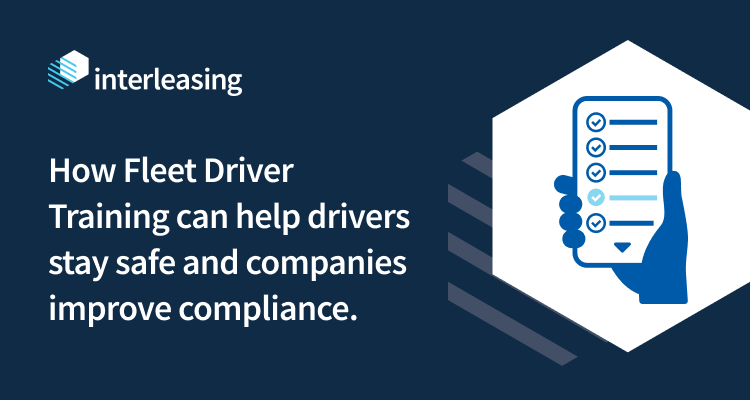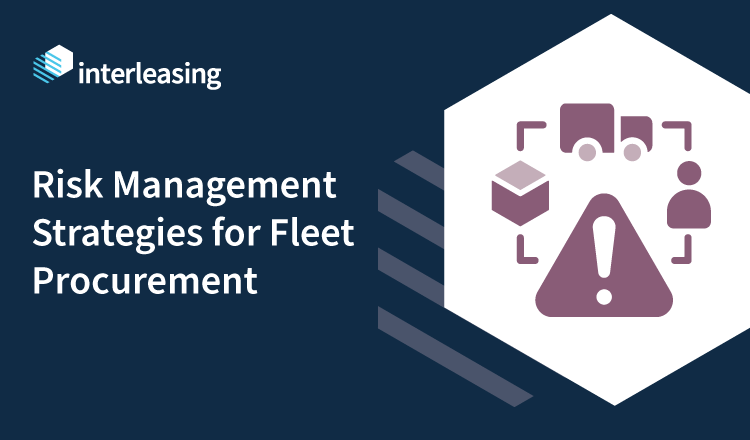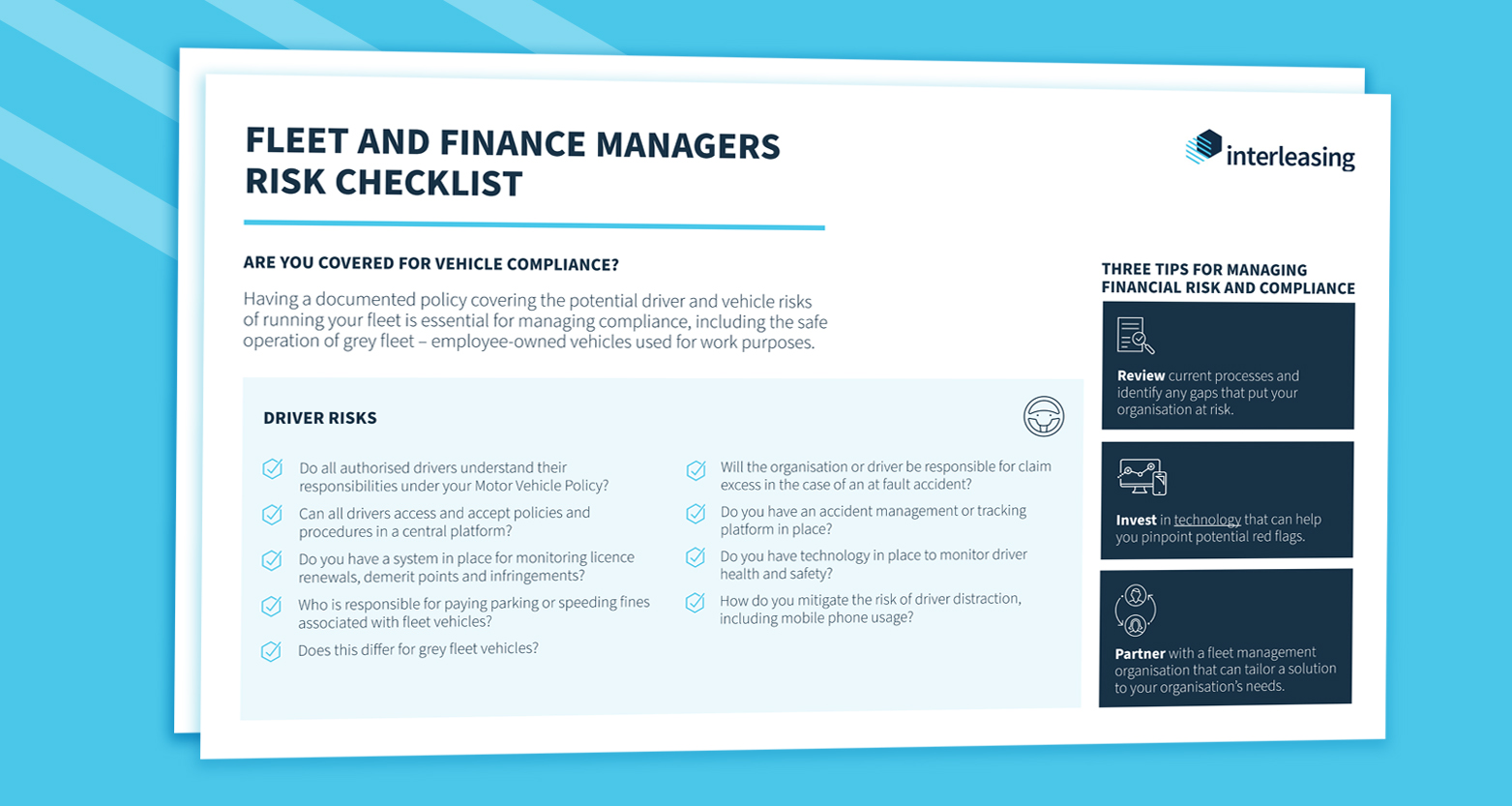
Driver safety is important for any organisation managing fleets and comprehensive fleet driver training programs are a great way to minimise risk. Here’s how.
Driving is the number one workplace health and safety (WHS) risk across industries, with 42% of Australian worker fatalities in 2023 caused by vehicle incidents.1 But it’s often overlooked by organisations. By law, employers must do what they’re reasonably able to do to keep employees healthy and safe.2 That extends to when employees are on the road. While many organisations have a driver policy to cover work-related travel, we believe there is more that can be done to ensure safety.
That’s where driver training comes in. Comprehensive driver safety programs can be a key hazard control strategy that can help fill gaps in your fleet drivers’ understanding, while encouraging best practice awareness. Organisations that implement ongoing training can see a reduction in driver stress and preventable accidents, improving their safety – while also assisting in compliance with WHS laws.
Here’s how you can build a training program that can help keep your drivers safe and increase compliance.
What steps can I take to build a driver training program?
Here are a few steps you can consider when developing a program that works for your drivers:
- Gather as much information as you can about your workforce drivers. That includes their driving frequency, location, time of day, vehicle types and traffic infringements
- Use the information you’ve gathered to identify focus areas for your training program. Keeping this data up-to-date can also serve as a constant feedback loop to improve the training over time. You might also want to have internal or external experts in risk and/or compliance teams advice as you categorise the risks from low to high in a matrix to help prioritise effort or enforcement
- Roll out your training across all drivers, from grey fleet through to staff who are on the road often, starting with eLearning as a quick win
- Consider whether you need in-person training for medium to high-risk drivers, like salespeople who are on the road frequently.
- Introduce quarterly best practice refresher emails to reinforce safe driving behaviours
- Use real examples from drivers who have been able to put their learning into practice to support their own safety and that of others, and share that with your driving cohort
There’s no single best way to build your driver training program. How you implement it depends on your organisation’s driver needs amongst other potential organisation-wide drivers.
In-person versus eLearning
There are a few ways you can implement driver training for your organisation, including in-person driver coaching and online learning modules. While hands-on training can be beneficial in specific circumstances, it’s not always practical or affordable.
Driver eLearning can be an effective way to distribute training to a large group of drivers while being less costly and faster to deploy. Not only can it help your organisation meet legislative requirements for training (depending on its obligations), it also provides regular and targeted guidance to your drivers with a light touch, but serious, approach. Online learning can help keep drivers up to date with new laws and address any bad habits and complacency developed over time.
Beyond education, driver eLearning demonstrates an organisation’s focus on safety, shaping people’s mindsets around driving risks. When implemented effectively, drivers report feeling safer and more in control because they’ve put what they learned into practice.
How do I ensure drivers engage with eLearning?
Naturally, the effectiveness of your training program relies on your drivers actually engaging with it. That means taking them on the journey. The key is to be intentional about your messaging from day one.
Communicate that safe driving is important for their wellbeing – and to stay compliant. Regularly share the benefits, objectives and expectations of training. This consistent messaging can help employees see training as more than compliance and how it will add value to their daily lives, inside and outside of work.
Here are some other ways to improve engagement with eLearning modules:
- Make it quick and easy to access
- Use focused and relevant content in language drivers understand
- Keep content bite-sized and succinct to hold attention without detracting too much time from their work
- Include a knowledge check with a handful of questions to encourage drivers to think and correct any misunderstandings
- Develop refresher content to re-engage with a lower time penalty
Keeping drivers engaged with eLearning over time through incentives and regular feedback may also improve the success of your program.
How can I measure the success of my driver training?
The data you gather before implementing your driver training program is crucial to measuring its success. Movements in these key indicators – from incident rates to driver behaviour changes – typically reflect your program’s effectiveness.
In addition to metrics, talk to your drivers. Get feedback on what they found useful, what stood out for them, what they still remember and if there’s any additional content they would find useful.
Use these insights to consider how to adjust elements of the training to ensure it continues to be fit for purpose and meets the needs of your fleet. Remember to keep detailed records of completion and outcomes to demonstrate your compliance.
Interleasing’s driver training program
Once you’re aware of your fleet driver training needs, it’s time to find the right training program. There are several driver eLearning courses and programs designed specifically for workplace and fleet driver safety, including Interleasing’s Driver Training.
Drawing from 20 years of corporate driver training and 1:1 assessments of common challenges, Driver Training provides engaging and relevant education that aims to keep your drivers safe. The platform offers the convenience of bite-sized online modules that are easy to navigate, from hazard perception and driver distraction to speed limits and risk factors. Integrating with other tools and platforms, such as Interleasing’s Pool Book, Driver Training collects useful data for continuous improvement. So, your training will only get more effective with time.
Improve driver safety today
Driver training extends beyond just empowering drivers to be more responsible, it also supports the success of other roles within the business, such as compliance, HR and OH&S. It can provide Fleet Managers with the ability to advise better and safer on-road behaviour. From a Finance and Procurement perspective, selecting an FMO who offers driver training also proves a more comprehensive selection process has been undertaken when choosing a partner.
Driver training is growing in importance to improve safety on Australian roads – as well as an increasingly sought after requirement in fleet tenders. Don’t wait for an issue to arise or compliance requirement before having the right training program in place. Get ahead with Interleasing’s Driver Training today.
1. Safe Work Australia, Model Work Health and Safety Act, Dec 2023
2. Safe Work Australia, Key Work Health and Safety Statistics 2024, Sep 2024


